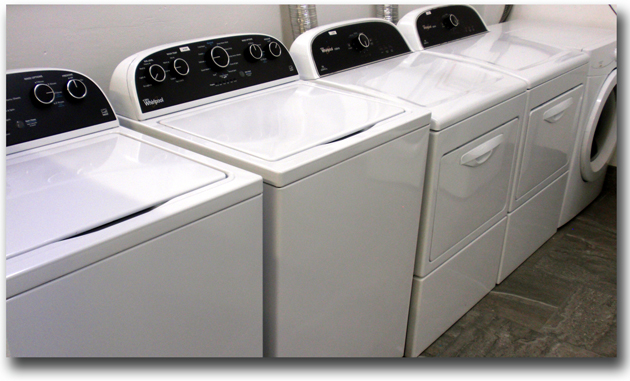Laundering Services for Antimicrobial Textiles
Get A Testing Quote
One way companies differentiate antimicrobial textiles is by increasing durability, or the number of wash cycles an antimicrobial fabric can withstand. Durability enhances consumer appeal and is an important consideration to buyers at large apparel companies. Textiles which retain antimicrobial efficacy after 25, or even 50 laundering cycles will have an edge over products which lose efficacy after being laundered a few times.
Antimicrobial textile durability is also a vital aspect of product design for EPA registration purposes. Most companies market their antimicrobial fabrics under EPA’s treated article exemption, which allows marketing without pre-approval for companies that use EPA-registered active ingredients and do not make public health claims. If a company wishes to market an antimicrobial textile on the basis of its activity against microorganisms of public health concern, then the fabric must be registered with the EPA as a pesticide. To register antimicrobial textiles, companies must submit a custom protocol to the EPA for approval, then conduct testing in compliance with GLP regulations. Currently, the EPA is only approving testing protocols that involve several laundering cycles, typically between 20 and 50. The EPA is also requesting incorporation of other stressing factors, such as UV exposure, multiple re-inoculations, and mechanical abrasion.
Microchem Laboratory’s Laundering Capabilities
Microchem Laboratory designed a special area of the laboratory for laundering antimicrobial textiles. It has state of the art machines specified by the AATCC and recommended by the EPA. Several of the machines have their outflow connected to a sealed vessel, allowing for proper containment of wastewater from laundering pathogen-inoculated textiles, which is then disinfected by laboratory staff. The setup includes its own large-volume water heater, so laundering temperature can be set precisely to ensure uniform treatments over time.

Technical Considerations
Several technical aspects of laundering relevant to antimicrobial product performance are presented below:
- Repeated washing, especially at high temperatures, may weaken the structural integrity of the fabric matrix that holds the antimicrobial component, increasing the risk it may be washed away.
- Washing can break antimicrobial fibers to expose more surface area, which may result in a temporary elevation of active ingredient delivery.
- Antimicrobial agents may over-elute during washing, especially at high temperatures.
- Anionic (negatively charged) surfactants, including standard laundry detergents can counteract the effect of positively charged antimicrobial agents such as quaternary ammoniums.
- Laundering with oxidative bleaching agents, such as sodium hypochlorite, may chemically destroy active ingredients.
- Load size, cycle speed, machine efficiency, and other settings can affect efficacy of the antimicrobial fabric.
- Fabric softening sheets can coat antimicrobial fabrics, resulting in decreased efficacy.
Testing with laundered textiles
The laboratory primarily conducts non-GLP tests on antimicrobial fabrics to verify efficacy and odor-inhibition capabilities, since these claims comprise the majority of the antimicrobial fabric market. The laboratory also conducts GLP testing to support EPA Health claims. Both types of testing are typically based on standardized antimicrobial tests for textiles.
Standardized textile tests can be modified with laundered textiles to increase the challenge level. These tests include the AATCC 100, and the JIS L 1902. For AATCC 100, several circular swatches of the textile are stacked then saturated with a dilute microbial suspension. For JIS L 1902, a single square swatch of the textile is spot-inoculated with a smaller volume of microbial suspension, rather than saturated. For both tests, the typical contact time is 18-24 hours and the contact temperature near body temperature, at around 36°C.
The standard versions of these tests provide excellent data regarding the efficacy of antimicrobial textiles after a certain contact time. Laundering the product prior to testing goes on to show the lasting durability of the product in addition to the original antimicrobial capabilities.
Laundering can change some of the technical aspects of testing. For instance, laundering generally increases test method variability and repeated washing cycles can cause the edges of some textiles to fray. Dryer cycles can also be a source of environmental contamination. Laboratory staff are well trained to recognize and deal with the implications of laundering on tests.
The lab’s unique laundering capabilities, coupled with years of expertise in antimicrobial testing, make Microchem Laboratirt the perfect place to conduct this type of testing.
